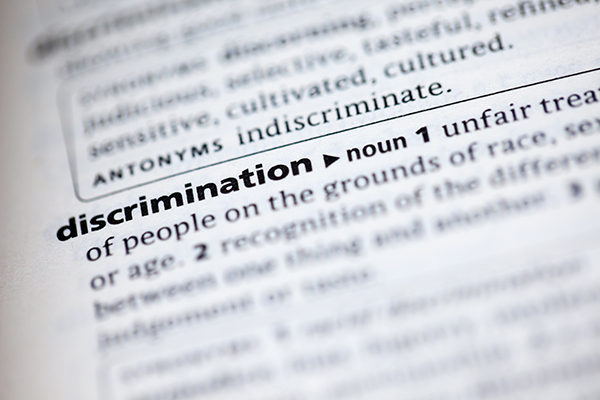
Brad Cave
by Brad Cave
Can an employer’s diversity, equity, and inclusion (DEI) program create liability for the discriminatory harassment of white employees? The U.S. 10th Circuit Court of Appeals (whose rulings apply to employers in Wyoming, Colorado, New Mexico, and Utah) recently warned that the training required by a Colorado state agency included some content that could constitute unwelcome race-based harassment. While the court ultimately rejected the employee’s harassment claim, the opinion serves as a good reminder that negative race-based messaging may be illegal no matter which race is the target.
White employee gets the blues over DEI training
Joshua Young worked for the Colorado Department of Corrections (CDOC). Department policy required all employees to complete mandatory DEI training, which included several online modules and incorporated a glossary of terms explaining various DEI themes and several additional videos and books about race.
Young objected to many of the messages in the training. His lawsuit alleged the training included “sweeping negative generalizations” about white people and painted the United States as a racist country. According to him, the training glossary said all white people are racist, and white people created the concept of race to justify the oppression of people of color. The glossary also explained that white people are triggered by feelings of guilt and fear when confronted with racial inequality and injustice, which amounted to “white fragility.”
The glossary claimed indigenous and black people have been the most affected by whiteness historically and in the present. Some of the additional materials referenced in the DEI training accused white people of believing their success was exclusively the result of their own merit rather than the product of past race discrimination, which gives white people a “misplaced sense of success.” He also claimed an Equity Continuum included in the training advocated for treating people differently based on race.
Young alleged he was required to view the training modules and felt pressured to review the additional materials the training recommended. He alleged the training created a culture of suspicion and distrust, and his awareness that his coworkers were being instructed by this material worsened the hostile environment. He claimed he was so harassed and intimidated by the training that he no longer felt comfortable working for the CDOC.
When he complained about the training through the CDOC’s formal complaint process, he was told his complaint wouldn’t be investigated because it didn’t establish reasonable cause to indicate the presence of discrimination or discriminatory harassment. He claimed the CDOC’s refusal to investigate or remedy the situation led him to resign.
Young then filed a hostile work environment claim under Title VII of the Civil Rights Act of 1964 against the CDOC and an equal protection claim against the department’s directors. The district court dismissed the lawsuit based on the allegations of his complaint because he didn’t demonstrate the alleged harassment was severe or pervasive. He appealed to the 10th Circuit.
CDOC’s ‘race-based rhetoric’ not severe or pervasive
The 10th Circuit analyzed Young’s Title VII claim under the well-established requirements to demonstrate a hostile work environment. Employees must allege they’re in a protected class; they were subjected to unwelcome harassment based on race; and the harassment was so severe or pervasive that it altered a term, condition, or privilege of employment and created an abusive environment.
Title VII isn’t violated unless the workplace is full of discriminatory intimidation, ridicule, and insult. Courts consider a variety of factors in determining whether allegations meet this requirement, including the frequency and severity of the discriminatory conduct, whether it’s physically threatening or humiliating or merely an offensive utterance, and whether it unreasonably interferes with an employee’s performance. Also, the conduct must be objectively offensive such that it would be deemed hostile by a reasonable employee in the same or similar circumstances.
The court recognized that Young’s allegations “paint an unflattering portrait” of the CDOC’s training requirements, particularly the following allegations:
- His knowledge that his colleagues were receiving the same race-based instruction exacerbated his hostile environment.
- The CDOC refused to investigate his complaint.
- He was forced to hear and absorb statements that were facially based on race, including sweeping generalizations about white people.
- One of the recommended videos included people using the N-word.
- Training materials advised trainees to be careful of “white norms” and to be critical of “white exceptionalism.”
- The belief that white allies were exceptions to white racism was labeled as “fakequity” that perpetuates white supremacy.
According to the court, “this type of race-based rhetoric is well on the way to arriving at objectively and subjectively harassing messaging.”
But this level of race-based rhetoric wasn’t enough. Young’s complaint failed to include allegations that met the severe or pervasive requirement. He didn’t allege specific facts or explain why he was forced to resign. He didn’t explain what, if anything, happened to him because of the training, such as unfavorable interactions with his supervisors or coworkers. He didn’t allege he was threatened with discipline if he refused to watch or agree with the training, that the training led his coworkers to insult or ridicule him, or that he was subject to ongoing training requirements of a similar nature.
While the training being adopted as an official policy added weight to his allegations, he didn’t experience actual severe or pervasive harassment in the day-to-day course of his job, and he couldn’t rely solely on the insult he experienced from the training. As a result, the trial court properly dismissed his claim. Young v. Colorado Department of Corrections, Case No. 23-1063, (10th Cir., 3/11/24).
Corrective action for CDOC?
While the CDOC defeated Young’s claims, two of the judges on the 10th Circuit panel weren’t impressed with the department’s DEI training. (The third judge on the panel agreed with the result but didn’t join the opinions expressed by the other two.) They concluded his objections to the training were “not unreasonable” because the racial subject matter and ideological messaging were “troubling on many levels.”
The judges warned this sort of officially sanctioned training can create hostile working environments if there’s ongoing stereotyping and supervisors expect discriminatory treatment. According to the opinion, “The rhetoric of these programs sets the stage for actional misconduct by the organizations that employ them.”
Although the employer prevailed in this case, you shouldn’t ignore its warnings. The pace of lawsuits challenging DEI programs may be quickening after the U.S. Supreme Court invalidated Harvard’s and the University of North Carolina’s race-based affirmative action admission policies. You should carefully review your DEI training materials to reconsider messages that are racially offensive. The fact that these programs may have positive goals won’t justify the adverse treatment of employees based on any race.

